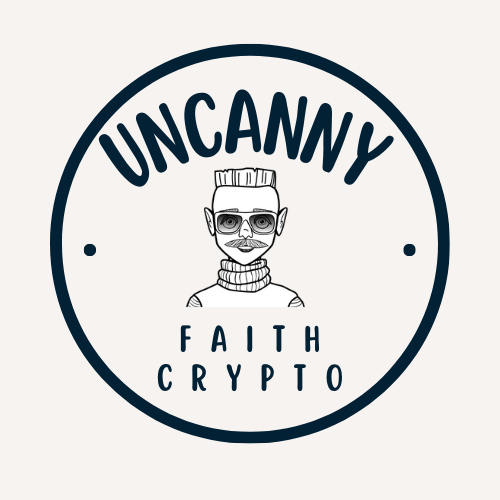Unlocking Web3’s Potential: Overcoming Barriers to Mass Adoption
In today’s interconnected world, mobile technology serves as a vital lifeline, linking billions of people globally to the internet and digital economies. With more than 8.5 billion mobile phones in use—exceeding the world’s population—smartphones are essential tools for communication, financial management, and commerce. However, while Web3 holds immense potential to revolutionize industries and financial systems, it has yet to achieve mass adoption due to several barriers.
For Web3 to transition from a promising innovation to a global necessity, it must address critical challenges limiting its accessibility and usability. Let’s explore those hurdles and opportunities.
1. Bridging the Mobile Gap in Web3
The dominance of smartphones in global internet usage is clear: over 92% of internet users connect via mobile devices. Despite this, a significant portion of Web3 applications remains tailored to desktop environments. Only a fraction of the top 100 decentralized applications (dApps) offer mobile-native experiences.
This limitation disproportionately impacts emerging markets, where mobile phones are often the sole gateway to digital connectivity. For instance, in countries like India, Vietnam, the Philippines, and South Africa, over 70% of adults rely exclusively on mobile devices for internet access.
The solution lies in a mobile-first approach. Blockchain ecosystems like Celo are already paving the way by designing mobile-friendly projects such as digital wallets and payment systems. With nearly 700,000 daily active addresses using stablecoins on Celo, the demand for practical, mobile-centric solutions is unmistakable. Similarly, initiatives like Opera MiniPay have amassed millions of users across Africa, making digital finance accessible through user-friendly, mobile-based tools.
2. Simplifying User Interfaces
One of the biggest hurdles to Web3 adoption is the complexity of its user interfaces. For mainstream users accustomed to Web2’s simplicity, managing cryptocurrency wallets, seed phrases, and private keys can feel intimidating.
Research suggests that over two-thirds of internet users reuse passwords for multiple accounts. This habit illustrates how unfamiliar security requirements for Web3 users could discourage adoption. Complicated onboarding experiences often worsen this gap—nearly 25% of Web3 users cite poor design as a major barrier.
To overcome this, Web3 platforms must prioritize intuitive and secure designs, making it easier for new users to get started. By addressing these pain points, Web3 has the opportunity to create gateways that welcome people into blockchain-based ecosystems.
3. Raising Awareness and Education
Despite its transformative potential, awareness of Web3 remains limited. Surveys reveal that only 8% of the global population is familiar with Web3 concepts. This lack of understanding is hindering adoption, especially in regions where decentralized technologies could have the greatest impact.
In emerging markets, where an estimated 1.4 billion people lack access to traditional banking services, Web3 offers solutions for challenges such as financial exclusion and currency instability. However, without sufficient education, many people are unaware of these benefits.
Educational programs like Learn & Earn initiatives are already driving change. For example, efforts in Nigeria, Vietnam, South Africa, and Brazil empower users to explore stablecoin use cases like international payments, secure remittances, and savings, all through mobile-friendly apps. By offering practical knowledge and hands-on experiences, such programs help demystify Web3 and encourage real-world adoption.
4. Addressing the Digital Divide
Access to the digital economy is closely tied to internet connectivity. Unfortunately, nearly 2.7 billion people globally still lack consistent internet access, often due to the high cost of infrastructure upgrades and devices.
In emerging markets like Brazil, Turkey, and Vietnam—areas experiencing growing crypto interest—affordability remains a key challenge. Many individuals own mobile devices but cannot afford to upgrade their technology for seamless Web3 integration.
Innovative partnerships, like one offering affordable Web3-enabled smartphones in 40+ countries across Africa, Southeast Asia, and Latin America, are helping address the digital gap. By lowering costs and enabling connectivity, these initiatives bring blockchain technology within reach for underserved communities.
5. Moving Beyond Speculation: Real-World Stablecoin Use
Historically, Web3 has been associated primarily with speculative investments. However, the recent rise in stablecoin adoption reflects a promising shift toward practical applications.
Stablecoins, pegged to fiat currencies like the U.S. dollar, provide stability for use cases such as daily transactions, cross-border payments, and savings. This reduces the volatility risk often associated with cryptocurrencies, making stablecoins more appealing to everyday users.
For example, stablecoins serve as a "bank in your pocket" in regions with limited banking infrastructure. Programs that encourage stablecoin earnings and transactions—especially via mobile apps—show how Web3 can deliver meaningful value, particularly in underserved areas.
By emphasizing stability and utility, stablecoins demonstrate that Web3 can go beyond speculation and create financial empowerment for users worldwide.
The Path Forward: Embracing Mobile for Global Impact
Web3 is at a pivotal crossroads. To achieve widespread adoption, the blockchain community must address the critical barriers of accessibility, awareness, and complexity. At the core of solving these challenges is the embrace of mobile technology.
With most users accessing the internet through smartphones, developing mobile-first Web3 solutions is not just advantageous, it’s essential. Ignoring this shift risks confining Web3 to a niche audience. However, by creating seamless, user-friendly, and mobile-centric experiences, the industry can unlock its "Apple moment"—transforming Web3 from a groundbreaking innovation into a truly mainstream phenomenon.
Through inclusive design, educational outreach, and affordability, Web3 can redefine global access to financial tools, empowering millions and reshaping the future of digital interactions. The momentum is building—now is the time to take the leap.
By adopting these strategies, Web3 holds the potential to revolutionize how the world interacts with technology, closing accessibility gaps and fostering financial inclusion on a global scale.

![[keyword]](https://www.uncannyfaith.com/wp-content/uploads/2025/01/When-Will-Web3-Experience-Its-Defining-Apple-Moment-1080x630.jpg)